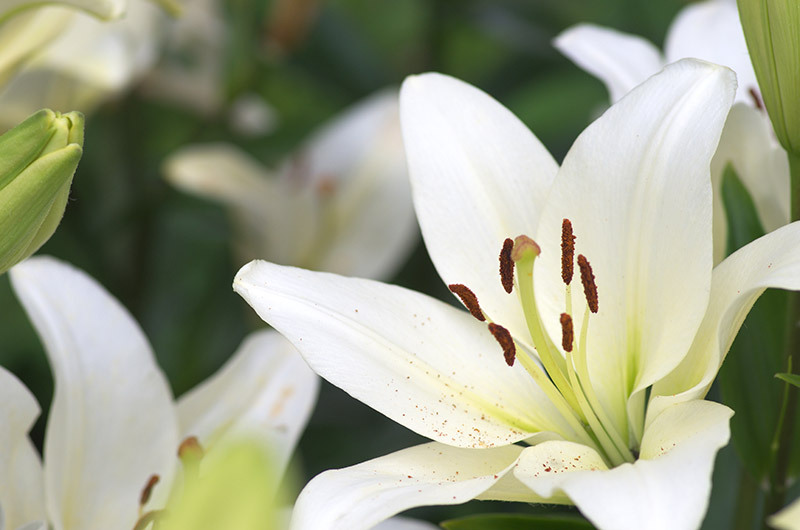Bringing Your Hydrangeas to Life with Expert Care
Posted on 25/08/2025
Bringing Your Hydrangeas to Life with Expert Care
Hydrangeas are cherished for their breathtaking blooms, lush foliage, and vibrant presence in gardens everywhere. But transforming your hydrangeas from ordinary to extraordinary requires more than just water and sunshine. Achieving flourishing hydrangeas is both an art and a science--combining expert care, timely techniques, and a deep understanding of the plant's unique needs.
Understanding Hydrangea Species: Getting to Know Your Plant
Before diving into expert hydrangea care, it's essential to recognize which type of hydrangea you're nurturing. Each species features unique characteristics and maintenance demands. Let's explore the most popular varieties:
- Hydrangea macrophylla (Bigleaf Hydrangea): Known for their large, mophead blooms; commonly seen in blue, pink, or purple hues.
- Hydrangea paniculata (Panicle Hydrangea): Tolerant of cold, boasting cone-shaped clusters in shades from white to deep pink.
- Hydrangea quercifolia (Oakleaf Hydrangea): Identified by their oak-like leaves and dramatic white-to-pink flowers.
- Hydrangea arborescens (Smooth Hydrangea): Usually white-flowered; famous for the 'Annabelle' variety.
- Hydrangea serrata (Mountain Hydrangea): Smaller, delicate versions of bigleaf hydrangeas, often with lacecap flowers.
Knowing your hydrangea species helps align your care to its specific needs, maximizing health and flower production.

Optimal Site Selection: Placing Your Hydrangea
Location is crucial in bringing your hydrangeas to life. These striking plants generally prefer:
- Partial sun--morning sunlight and afternoon shade are ideal.
- Shelter from harsh winds, which can damage delicate blooms.
- Well-draining, fertile soil with added organic matter.
Hydrangeas thrive where they're protected and consistently moist but not waterlogged. Avoid deeply shaded areas, as insufficient sunlight can lead to fewer flowers and spindly growth.
Expert Planting Tips for Vibrant Hydrangeas
Soil Preparation
Healthy hydrangeas begin with excellent soil. Loosen soil to a depth of 12-18 inches and incorporate compost or aged manure. Aim for a pH level between 5.5 and 6.5, though some varieties, like H. macrophylla, will alter their flower color depending on soil acidity.
- For blue blooms: Soil should be more acidic (pH 5.2-5.5). Add aluminum sulfate if needed.
- For pink blooms: Soil should be more alkaline (pH 6.0-6.2). Incorporate lime to raise the pH.
Correct Planting Depth
Avoid planting hydrangeas too deeply. The top of the root ball must sit level with the surrounding soil. Water thoroughly upon planting to settle roots and reduce air pockets.
Watering Your Hydrangeas: Striking the Right Balance
One of the most important aspects of professional hydrangea care is consistent watering.
- Hydrangeas have shallow, fibrous roots that dry out quickly, especially in hot weather.
- Aim for 1-2 inches of water per week, provided by rainfall or irrigation.
- Water early in the morning to minimize evaporation.
Pro Tip: Mulching with 2-3 inches of organic matter helps retain soil moisture and keeps roots cool.
Fertilizing for Abundant Blooms
Feeding your hydrangeas correctly will ensure luxuriant growth and spectacular blooms.
- Use a balanced, slow-release fertilizer--such as 10-10-10--early in the spring as soon as new growth appears.
- Repeat every 4-6 weeks through mid-July, but avoid fertilizing in late summer or fall, which can result in tender growth susceptible to frost damage.
- Avoid over-fertilization; too much nitrogen encourages leaf growth at the expense of flowers.
Pest and Disease Management
Healthy hydrangeas are less likely to suffer from pests or diseases. However, expert care involves vigilance:
- Aphids, spider mites, and scale: Inspect leaves regularly. Spray with insecticidal soap if needed.
- Leaf spot and powdery mildew: These fungal issues may arise, particularly in humid climates. Remove infected leaves and provide adequate spacing for airflow.
- Root rot: Prevent with well-drained soil and avoid overwatering.
Integrated pest management--combining prevention, monitoring, and treatment--is the expert approach to keeping your hydrangeas vibrant.
Pruning Hydrangeas for Shape and Success
Pruning hydrangeas can be confusing due to different flowering habits among species. The right technique ensures lush blooms year after year:
Bigleaf and Mountain Hydrangeas
- Bloom on old wood (last year's stems).
- Prune immediately after flowering to avoid removing next year's buds.
- Remove dead wood, spent blooms, and thin out congested stems as needed.
Panicle and Smooth Hydrangeas
- Bloom on new wood (current season's growth).
- Prune in late winter or early spring before new growth emerges.
- Cut back stems to 1/3 of their length for a compact, floriferous shrub.
Oakleaf Hydrangeas
- Need minimal pruning--remove only dead or damaged wood.
Expert tip: Always use sanitized, sharp pruners to prevent disease spread and encourage rapid healing.
Mulching and Moisture Maintenance
Applying mulch is an expert trick for hydrangea health. It moderates soil temperature, preserves moisture, and keeps weeds at bay.
- Use organic mulch--such as shredded bark, pine needles, or compost--2 to 3 inches deep.
- Keep mulch a few inches away from the base of the stems to prevent rot.
Adjusting Flower Color: The Science of Hydrangeas
Changing hydrangea color is a fascinating art, possible primarily in Bigleaf hydrangeas. Their color is determined by soil chemistry:
- Acidic soil: Results in blue flowers. Lower pH by applying aluminum sulfate.
- Alkaline soil: Yields pink or red blooms. Add lime to increase pH.
Always test your soil before adjusting pH--extreme swings can harm plant health.
Seasonal Hydrangea Care Guide
Spring
- Apply mulch and fertilizer after new growth appears.
- Prune hydrangeas based on species guidelines above.
- Inspect for pests and emerging diseases.
Summer
- Water deeply during dry spells.
- Deadhead spent blooms for tidiness, except those that bloom on old wood if you want to promote seed heads.
- Monitor for fungal issues and insect pests.
Fall
- Reduce fertilization as growth slows.
- Prepare plants for winter; in cold zones, consider wrapping or mulching heavily around the base to protect buds.
Winter
- Minimal watering is needed when dormant.
- Protect vulnerable varieties from freeze and desiccating winter winds using burlap or protective cones.
Propagating Hydrangeas: Growing Your Garden
One of the joys of hydrangea gardening is propagation. Try these expert methods:
- Stem cuttings: In early summer, snip 4-6" sections of non-flowering stems. Remove lower leaves, dip ends in rooting hormone, and plant in moist potting mix.
- Layering: Gently bend a low-growing branch to the ground, wound it slightly, and cover with soil. Roots should form by fall.
New plants are ready to transplant after they've established a robust root system.
Troubleshooting Common Hydrangea Problems
Even with the best care, hydrangeas can experience setbacks. Here's how to address typical issues:
- No blooms: Often due to improper pruning (removing old wood) or winter bud kill. Protect buds and follow species-specific pruning times.
- Wilting: May be caused by drought, excessive sun, or root rot from overwatering.
- Yellowing leaves: Frequently a sign of poor drainage or overwatering. Ensure well-drained soil and adjust watering habits.
Showcasing Hydrangeas in Your Landscape
An expertly cared-for hydrangea is a showstopper in any garden design. Try these landscaping ideas to make the most of their dramatic presence:
- Mass plantings: Create a breathtaking hedge or border with repeated hydrangea varieties.
- Mixed beds: Combine with shade-loving perennials, hostas, or ferns for texture and contrast.
- Containers: Compact varieties thrive in pots--perfect for patios or small-space gardens.
Hydrangeas also reward you indoors: Their cut flowers--fresh or dried--make spectacular centerpieces and bouquets.

The Benefits of Expert Hydrangea Care
- Longer bloom time and larger, more colorful flowers
- Healthier plants more resilient to pests and disease
- Ability to manipulate flower color for customized garden displays
- Opportunities for propagation and garden expansion
The Joy of Flourishing Hydrangeas
In summary, bringing your hydrangeas to life involves a harmonious blend of attentive care, strategic feeding and watering, proper pruning, pest and disease control, and an eye for landscape design. Each season brings new opportunities to nurture and enjoy these beloved shrubs. With expert hydrangea care, your garden will be filled with lush foliage and spectacular flowers--year after year.
Start today, follow these proven techniques, and watch your hydrangeas transform your landscape into a veritable paradise of color and life.







